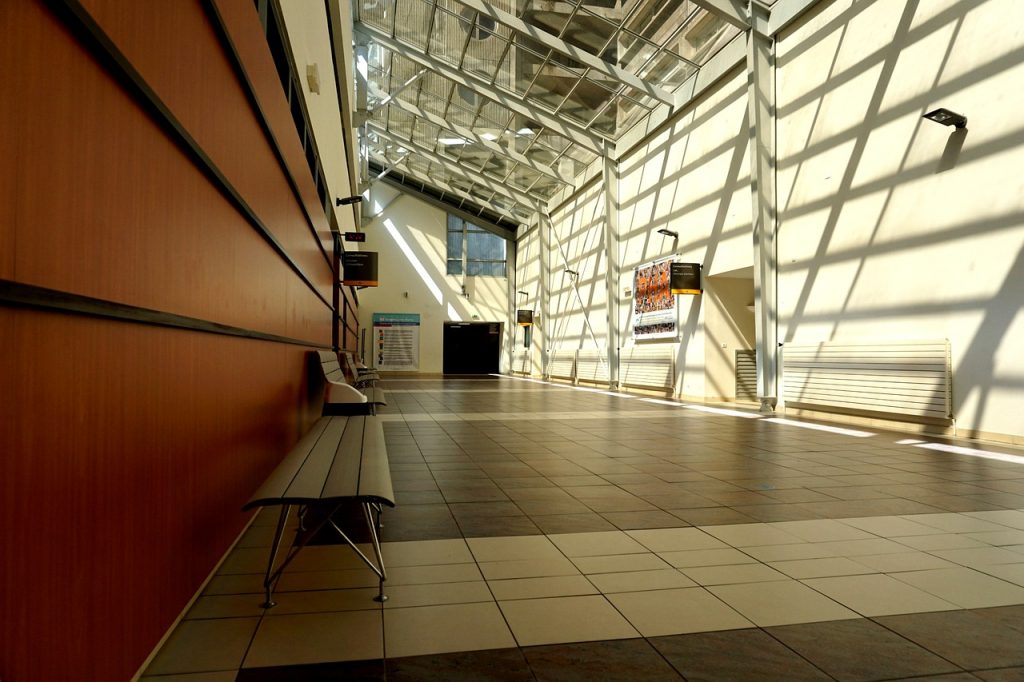Thank you for rejoining us this week for the continuation of our series, Lighting is Highly Critical for Alzheimer’s Disease and Related Dementia Care Facilities.
In our last post, you learned that the prevalence of Alzheimer’s Disease and Related Dementia (ADRD) is increasing by the day. Currently, 5 million people suffer from these brain diseases; however, that figure is expected to rise by 40% in the next 8 years. As a result, it will be necessary to incorporate more care facilities such as assisted living facilities, memory care units, nursing homes, and adult day care centers into the nation that will aid in caring for those with Alzheimer’s and/or dementia.

Physicians, therapists, and those that have loved ones suffering from these devastating illnesses must encourage these facilities to be designed with the proper lighting as evidence now suggests that the appropriate lighting could result in many positive effects for the Alzheimer’s and/or dementia patient. You were introduced to blue lighting in our previous installment. This week, we will conclude this series by expounding on the other benefits of proper care facility lighting.
World Interpretation
Alzheimer’s Disease and Related Dementia results in a person interpreting the world in a much different way than those that are not suffering from these brain diseases interpret it. We all develop an understanding of our world by using our senses; however, those with Alzheimer’s and/or dementia may experience complications with their senses. By the age of 75, a normal adult requires twice the amount of light than is designated as being a “standard”. Additionally, they require up to four times as much as a person aged 20. For the Alzheimer’s and/or dementia patient, increased lighting may be required – not just to be able to see, but to ensure comfort in their environments. Many patients may find that their surroundings are dark and become disoriented. This could lead to high levels of distress. As a result, increased lighting is required. When care facilities are designed, functional lighting should be at the top of the list of priorities.
Points to Consider
When incorporating light into a care facility for patients with Alzheimer’s and/or the various types of dementias, the following points should be considered:
- When commercial lighting is placed within a facility, it should be even and it should be consistent. This will aid in eliminating dark spots that could project an ominous feeling in the environment.
- In a traditional day, we are exposed to various colors of light. In the morning hours, these colors are often reddish and orange. In the midday, we are exposed to blue and white light. In the evening, we are then exposed to reddish and orange-based lights. By utilizing commercial lighting that reflects traditional colors of the day, the body’s circadian rhythm is likely to stay on target.
- When placing light in a care facility, it is imperative to ensure that glare is reduced throughout the structure. Glare has proven to be highly disorienting and distracting with those with Alzheimer’s and/or dementia. Facilities may succeed in this endeavor by using spacing between lights and installing only non-reflective surfaces.
- When considering lighting for a care facility, it is important for architects to consider natural sources of light -such as windows. These should be placed in areas where patients may reflect and experience positive levels of stimulation, such as facing a wooded area, a park area, or a garden area.
- Commercial lighting placed in care facilities should also focus on tasks. This is often referred to as “task lighting”. Prime areas for task lighting include the restrooms of the facilities, showering areas, activity areas, and optional task lighting in living areas where patients read, knit, or do similar activities.
Lighting is critical to the mood, behavior, and comfort levels of patients suffering from Alzheimer’s disease and various types of dementia. Many care facilities overlook this very important aspect of care; however, as more and more get diagnosed with this condition, it will become increasingly important to integrate non-pharmaceutical treatments to optimize care. While most with these brain diseases are unable to appropriately express the importance of proper lighting in the facilities that they call home, they all have the same needs and wants as the rest of us – including proper and therapeutic lighting. In the words of a current dementia patient in the State of Florida named Roger D. White, “I am still the same person. It’s still me….”
At Hardcore Electric, we specialize in a vast array of lighting types that will help patients in care facilities. We do new construction electricity, remodel electricity, lighting design retrofits, security systems for memory care units, network wiring, telephone wiring, and more. For information, visit our service page today at: http://www.hardcore-electric.com/sevices/
